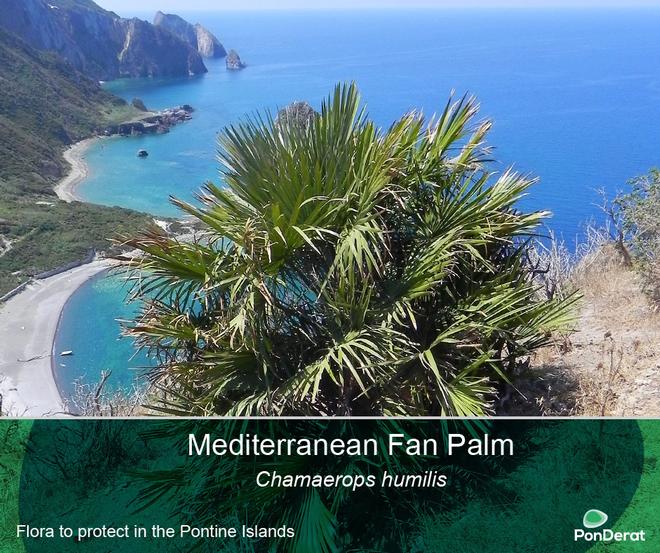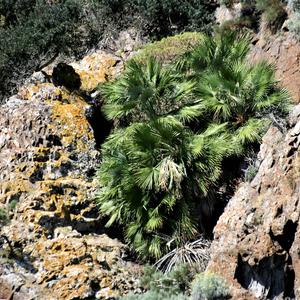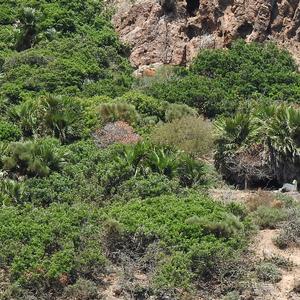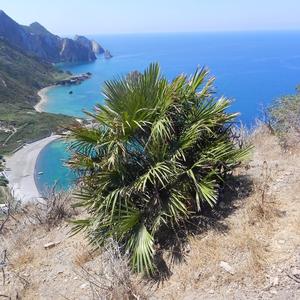
2 March 2020
Mediterranean Fan Palm Chamaerops humilis is the only palm species native to Italy, and a “survivor” (relict) of the Tertiary flora that populated Italy under a humid subtropical climate.
Mediterranean Fan Palm is an evergreen palm of the Arecaceae family. The stem is from 0.50 to 2 metres tall (ornamental individuals may be much taller) and usually produces basal shoots. On mature individuals it is usually covered by fibers and old leaf bases. Leaves are rigid and palmate and terminate in rounded fans of 10–20 leaflets. Fruits (dates) are dark yellow to brown as they ripen in autumn.
The species grows on coastal rocks and in evergreen maquis and scrub formations, in the driest areas along the coast. It is present in Liguria (Portofino), Tuscany (Populonia, Castiglione della Pescaia, Argentario, Tuscan archipelago), Lazio e in southern Italy (Campania, Molise, Puglia, Calabria, Sicily, Sardinia). Elsewhere it is often cultivated as ornamental.
In Lazio the fan palm is rare and grows spontaneously on the Circeo promontory, on the Ausoni and Aurunci mountains (Sperlona-Gaeta), and on the Pontine islands (Ponza, Palmarola, Ventotene). Palmarola owns its name to this species, which is frequent at the northern tip of the island (Mt. and Punta Tramontana), where it characterises the rocky habitats and a specific subtype of Mediterranean maquis listed in the 92/43/EEC Habitats Directive (5330 Thermo-Mediterranean and pre-desert scrub).


